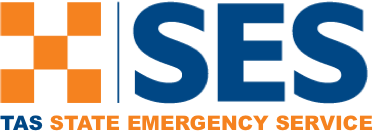Recovery Partners Network
What is it
The Recovery Partners Network (RPN) was formed in 2017 and is facilitated by the Office of Security and Emergency Management.
Purpose
The purpose of the RPN is to bring together non-government and community organisations and Tasmanian Government agencies to build networks and relationships that enable collaborative and coordinated recovery efforts during and after emergencies.
What do they do
The RPN meet at an annual forum where all members are invited to attend to share learnings from previous recovery efforts and understand what work is being done going forward in the Tasmanian disaster recovery space to improve outcomes for Tasmanian communities.
RPN members include non government organisations and charities, community sector and industry bodies, private sector organisations and Tasmanian Government representatives.
A valuable resource for organisations involved in recovery.
Dr Steven Curnin, Director of the Disaster Resilience Research Group ,University of Tasmania, studies the human factors of disaster resilience and specifically how we can improve our management of out of scale events. Based on insights provided by people involved in the 2016 flood, he launched the Working Together in Recovery Guide in 2019 following a grant from the Tasmanian State Emergency Management Program: a guide for Tasmanian not-for-profit participation. This practical and simple guide provides advice for the not-for-profit and public sectors on how to enhance collaboration during the recovery phase of a disaster in Tasmania.

Recovery Task-force/unit
A Recovery Task-force is a temporary Tasmanian Government business unit established after a significant natural disaster or other emergency to support affected communities and coordinate a whole-of-government recovery effort. It includes:
- The task-force will have a Director, Agency Liaison Officers, Policy and Data Team, Communications Team, Regional Support Team/s and Finance Management and Administration support.
- Permanent staff on the recovery register may be called to work in the task-force for at least six months. The time-frame is reviewed quarterly.

Successful recovery
Relief and recovery facilitate long-term disaster resilience.
This means that:
- Tasmanian’s are supported, and infrastructure /services are rebuilt or repaired during and after disasters to assist with long-term disaster resilience
- Tasmanian’s actively enable their own and others relief and recovery during and after disasters supported by all levels of government. Infrastructure and services are rebuilt, repaired or relocated to assist long-term resilience and maximise community benefits.
Support encompasses all aspects of recovery to facilitate long-term resilience. This encompasses social, infrastructure, economic and environmental recovery. Recovery aims to:
- Support individuals, communities, businesses and the natural and cultural environment to deal with the impacts of a disaster
- Facilitate broad community participation in decision-making
- Ensure that resourcing is targeted and appropriate to risk
- Enhance ongoing disaster resilience.
Examples of recovery activities
These include the following:
- Recovery Plan development
- Develop and implement funding initiatives
- Case management support for affected people
- Coordinated programs to support demolition and clean up, debris and carcass removal
- Longer term economic and community recovery initiatives – sector based, community grants.



Public Information Recovery Team
The role of the PIU Recovery Team is to liaise with recovery stakeholders, coordinate recovery information, develop strategy and guide the transition to recovery.
Key responsibilities of the team include:
- Develop recovery communications plans
- Liaison with internal and external stakeholders
- Activate and manage the recovery website and social media accounts
- Prepare recovery communications for handover to Recovery Taskforce or back to government agencies.

That brings us to the completion of our Module
In Summary
- Recovery is a shared responsibility of communities and government
- It involves all levels of government – local, state and commonwealth – as well as affected communities and non-government and community organisations
- Recovery starts during the emergency response and encompasses linked and overlapping phases of relief and short term recovery, early recovery planning and medium to long term recovery
- It is important to learn from experience and continually refine arrangements to enhance future recovery processes.

The majority of these documents can be accessed on the SES webpage under Emergency Management supporting documentation and resources.
WebEOC File Library does contain many of these documents as well.
- Tasmania Emergency Management Arrangement
- The Working Together in Recovery guide
- Tasmanian Relief and Recovery arrangements
- State Special Emergency Management Plans and Associate Plans-WebEOC-Municipal Councils websites
- Tasmanian Disaster Resilience Strategy 2020-2025
- SEMC Strategic Directions Framework 2020-2025
- Tasmanian Emergency Evacuation Framework
- Managing Exercises: A handbook for Tasmanian Government Agencies
- People at Risk in an Emergency
- Municipal Emergency Management Guidelines-(MEMG)
- Australian Institute for Disaster Resilience (AIDR) Knowledge Hub
- AIDR Knowledge Hub
- Australasian Fire and Emergency services Authority

